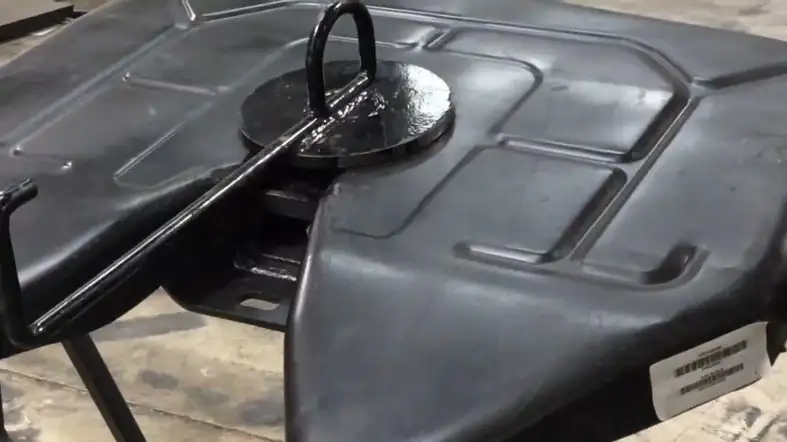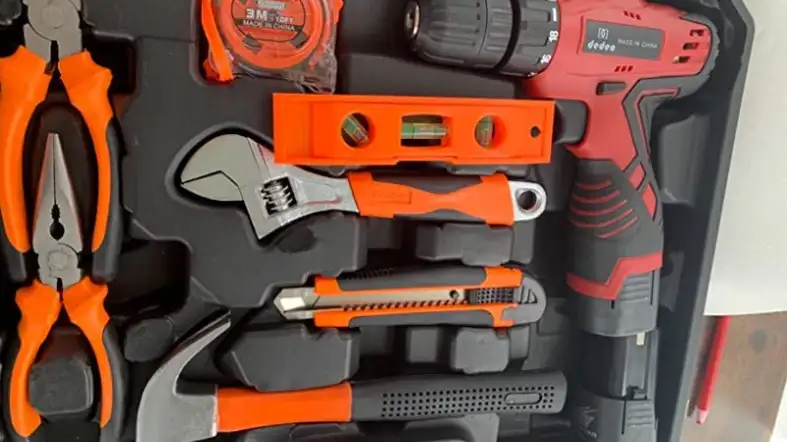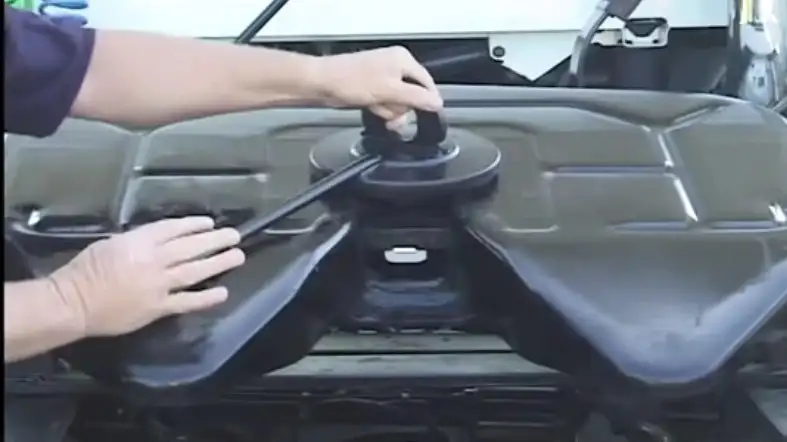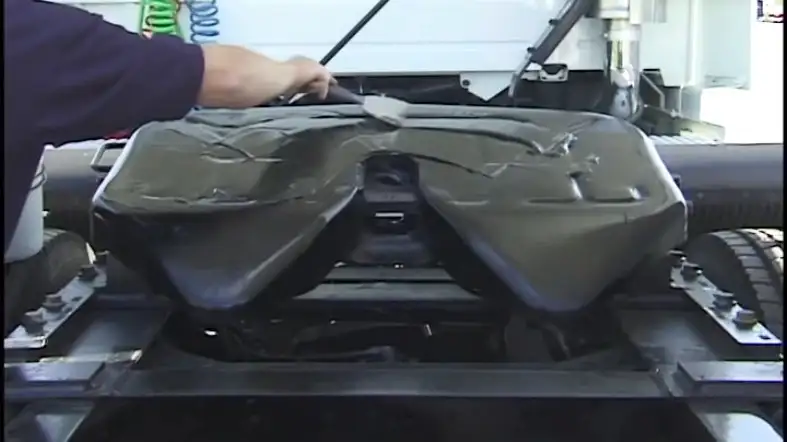If you have a Fontaine fifth wheel trailer and are experiencing issues with its performance or stability, it may be time to consider adjusting the wheel.
This process involves identifying any potential problems, gathering the necessary tools and equipment, and following a series of steps to fine-tune your wheels for optimal performance.
Whether you’re new to fifth wheel adjustments or have experience with the process, there are some important tips on how to adjust a Fontaine fifth wheel.
Read below to know more!
How To Adjust A Fontaine Fifth Wheel?
Here are given the procedure on how to adjust a Fontaine fifth wheel:
1. Adjusting the Fontaine Fifth Wheel
If your Fontaine fifth wheel is not tracking properly, or if you notice that it is starting to sag in the middle, you may need to adjust the tension on the suspension.
This can be done by loosening the bolts that connect the fifth wheel to the frame of your trailer.
Once the bolts are loosened, you will be able to move the fifth wheel forward or backward, depending on which way you need to adjust it.
2. Adjusting the tension on the suspension
The tension on the suspension can be adjusted by turning the adjusting nuts located on either side of the fifth wheel.
These nuts can be turned by hand, or with a wrench if they are too tight.
To loosen the tension, turn the nuts counterclockwise.
To increase the tension, turn the nuts clockwise.
3. Testing the fifth wheel
After you have adjusted the tension on the suspension, it is important to test the fifth wheel to make sure that it is tracking properly.
To do this, simply drive your trailer down a straight stretch of road at a moderate speed.
If you notice that the fifth wheel is not tracking properly, you may need to readjust the tension.
When adjusting your fifth wheel, there are a few things that you should keep in mind.
First, always make sure that your trailer is parked on level ground before making any adjustments.
Second, when adjusting the tension on the suspension, always make small adjustments and then test the fifth wheel before making any further adjustments.
How to identify if you need to adjust your Fontaine fifth wheel?
There are some ways to know if you need to adjust your Fontaine fifth wheel or not. They are:

1. Check the Tires
The first thing you should do if you think your Fontaine fifth wheel needs to be adjusted is to check the tires.
If the tires are wearing unevenly, it’s a good indication that the fifth wheel is not properly aligned.
You should also check the air pressure in the tires to make sure they’re properly inflated.
2. Look at the Suspension
Another thing to look at if you think your Fontaine fifth wheel needs to be adjusted is the suspension.
If the suspension is sagging or if there are any cracks or breaks in it, it’s a good indication that the fifth wheel needs to be serviced.
3. Listen for Strange Noises
If you’re driving your Fontaine fifth wheel and you hear strange noises coming from it, it’s a good indication that something is wrong.
It could be that the fifth wheel isn’t properly lubricated, or it could be that there’s something else wrong with it.
Either way, it’s best to have it checked out by a professional.
4. Feel for vibrations
Another sign that your Fontaine fifth wheel needs to be adjusted is if you feel vibrations coming from it while you’re driving.
This can be caused by a number of different things, but it’s usually an indication that something is out of alignment.
5. Check the brakes
Finally, if you think your Fontaine fifth wheel needs to be adjusted, you should check the brakes.
If the brakes are squealing or if they’re not working as well as they should, it’s a good indication that they need to be serviced.
What Tools You Will Need To Adjust Your Fontaine Fifth Wheel?

The tools you will need to adjust Fontaine’s fifth wheel are:
- A drill
- A screwdriver
- A socket wrench
- A hammer
- A level
Tips For Ensuring A Successful Adjustment

Some tips for ensuring a successful adjustment in a long run are given below:
1. Read the Owner’s Manual
The first step to successfully adjusting your Fontaine Fifth Wheel is to read the owner’s manual.
The manual will provide you with important information about the proper way to adjust your fifth wheel.
It is important to follow the instructions in the manual in order to avoid damaging your fifth wheel or voiding your warranty.
2. Park on a Level Surface
It is important to park your RV on a level surface before attempting to adjust your fifth wheel.
If your RV is not level, it will be difficult to properly adjust the fifth wheel.
You may need to use leveling blocks or jacks in order to level your RV before proceeding.
3. Loosen the Locks
Before you can begin adjusting your fifth wheel, you will need to loosen the locks that are holding it in place.
There are typically two locks located on either side of the fifth wheel.
Once the locks are loosened, you will be able to move the fifth wheel around in order to adjust it.
4. Adjust as Needed
Once the locks are loosened, you can begin adjusting the fifth wheel as needed.
You may need to adjust it up or down, depending on your particular RV and how level it is.
It is important to make small adjustments until you have achieved the desired result.
5. Retighten the Locks
Once you have successfully adjusted your fifth wheel, you will need to retighten the locks in order to hold them in place.
Make sure that the locks are tight enough so that the fifth wheel does not move, but not so tight that they are difficult to remove if you need to make further adjustments in the future
What Are Some Common Problems That May Require A Fifth Wheel Adjustment?

Some common problem may arise which requires a fifth wheel adjustment.
Some of them are given here:
1. Uneven Braking
If your fifth wheel is not properly adjusted, it can cause uneven braking.
This can be dangerous, as it can cause your rig to veer to one side when you brake.
2. Poor Tracking
If your fifth wheel is not properly adjusted, it can also cause poor tracking.
This means that your rig will not track straight behind your tow vehicle.
This can make it difficult to stay in your lane and can also lead to increased wear and tear on your tires.
3. Excessive Wear and Tear
If your fifth wheel is not properly adjusted, it can also cause excessive wear and tear on your tires.
This is because the weight of the trailer will not be evenly distributed, which can lead to uneven tire wear.
4. Increased Fuel Consumption
If your fifth wheel is not properly adjusted, it can also lead to increased fuel consumption.
This is because the extra weight of the trailer will cause your engine to work harder, which will use up more fuel.
5. Safety Hazard
Lastly, if your fifth wheel is not properly adjusted, it can pose a safety hazard.
This is because the trailer could come detached from the tow vehicle while you are driving, which could lead to a serious accident
FAQs about Adjusting A Fontaine Fifth Wheel
1. How Often Should I Adjust My Fifth Wheel?
There is no set schedule for adjusting a Fontaine fifth wheel, as this will depend on the type of trailer you are using and how frequently you use it.
You may need to make adjustments more frequently if you do a lot of hauling or heavy-duty driving, or if your fifth wheel shows signs of wear or instability.
2. How Can I Ensure A Smooth, Successful Fifth Wheel Adjustment Process?
To ensure a smooth, successful fifth wheel adjustment process, it is important to identify the source of any potential problems and make sure you have the right tools and equipment on hand.
Additionally, it is important to use proper safety precautions and follow any specific adjustment instructions or guidelines provided by your trailer manufacturer.
With careful preparation and attention to detail, you can achieve optimal performance from your Fontaine fifth wheel.
3. What Is The Correct Position For Fifth Wheel?
The fifth wheel hitch should be positioned so that it is level with the truck’s axle, and the trailer should be centered over the axle.
This will help to distribute the weight of the trailer evenly and prevent the truck from being overloaded on one side.
It is important to make sure that the fifth wheel is properly secured before setting off.
All of the pins and chains should be in place, and the trailer brakes should be tested before hitting the road.
Final Thoughts
Whether you are a seasoned veteran or new to fifth wheel adjustments, it is important to take the necessary steps to ensure a smooth and successful process.
By identifying potential problems, gathering your tools and equipment, and following best practices for adjustment, you can achieve optimal performance from your Fontaine fifth wheel trailer.
